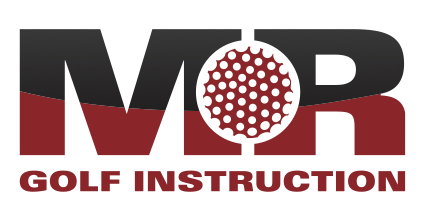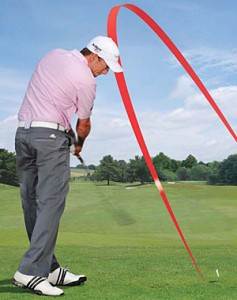It’s the most dreaded shot shape in golf, one known to millions of golfers and instructors around the globe. It rears its’ ugly head as if guided by a mysterious force, pulled into water hazards with a final, ugly splash. The slice has ruined many golf games and spawned many training aids and filled many online shopping carts with the next great fix. But truthfully there is no secret to fixing a slice without first knowing one important piece of information: are you a “face” slicer or a “sequence” slicer? Let’s look deeper to help you first diagnose your type of slice, and take the first step in sinking it forever.
In teaching golfers every day, the slice I see the most is the “face” slice. What does this mean? Put simply, these golfers have a face that is open to the arc of their swing, thus forcing them to come over the top in a last-ditch effort to get the club face pointed closer to the direction they are swinging. Make no mistake, the human body and mind are powerful, and they will use any and all means to put the club on the ball in order to make it go to the target. But in most cases it is a losing battle. The “face” slicer usually starts (for a right handed player) with a grip that is too much to the left on the grip (characterized often as a “weak” grip). This grip only causes the club face to stay in a more open position at the top, and leads to the outward swinging motion. So to get things fixed, work on getting your grip more to the right on the grip (“stronger”) to help control the clubface better. What you will find is an amazing change often happens, as evidenced by the swings I see using TrackMan each day. When the grip is improved, which improves the club face position, the swing often times comes much more from the inside and less over the top. Slice busted – with a simple grip change.
The other, but less common slice, is the “sequence” slicer. This player has a good grip and square to even slightly closed club face, but they still come way over the top and slice the ball every bit as much as the “face” slicer. But why? The “sequence” slicer doesn’t have a good sense of the proper sequencing that must take place in the downswing, and tries to simply muscle it out there with the upper body starting the swing. It’s absolutely critical to get this type of slicer to understand the main order of things, or kinematic sequence: hips, torso, arms, club. If the downswing doesn’t move in that order it’s all over! Often times I will use other sports, such as tennis or throwing a baseball, to tap into their feel for the proper movement. You wouldn’t see a baseball pitcher throw without first stepping toward the plate, and the same sequence applies here. Get the lower body moving laterally into the left foot first, and this move will have huge benefits for not only coming less over the top, but your distance will explode as well!
So don’t grab your credit card and buy that “interesting” looking training aid on television in hopes of a miracle. Instead, admit you have a problem (the first step in the road to recovery) and find out what type of slicer you have become. Then work with your PGA Professional to eliminate that water on the right side forever and enjoy the middle of the fairway.




